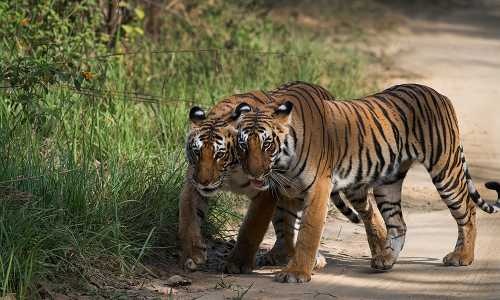Wildlife Photography Tips for Corbett National Park
If you have ever been in love with the hills then you probably know that there’s no escapade and one such place that makes you want to live the moment and capture the ethereal beauty of nature is Corbett National Park in Uttarakhand. In India itself there are thousands of photographers who have taken wildlife photography to another level and are en-cashing from it.
Tempting the shutterbugs to capture wildlife at its best, Corbett National Park has been the best canvas for the professional photographers. The park harbours rare flora and fauna. You can have a glimpse of various wild cats occasionally wandering around the park, marking their territory in the area. And with proper planning, some tips and tricks at hand, you can click the best photographs ever, so let’s have a look at some of the points that you should keep in your mind while photographing at Corbett.
Offers on Corbett National Park Tour Packages
Why Corbett National Park should be your priority for wildlife photography?
Corbett National Park is home to over 586 species of birds and a temporary home for the varied migratory birds that come here during winters. One can see around 7 species of avifauna, 7 species of fish and 36 species of dragonflies here. The most noticeable and captured ones are the Bengal Tigers who dominate the park. The giant Indian elephants and leopards can also be seen roaming in the vast meadows carpeted in the park. With patience and tricks up your sleeve, you can shoot a variety of mammals including four species of deer (sambhar, barking deer, chital, and hog), Indian grey mongoose, sloth and Himalayan black bears, otters, yellow-throated martens, Indian pangolins, langur and rhesus monkeys.
Things to capture during your Corbett visit
If we talk about wildlife photography in Corbett National Park, capturing a big cat in vivid poses holds a great value. However, there are other options available which will persuade you to open the camera shutter and click. The best shots that shouldn't be missed are of gharial basking under the shade of the tree, an eagle aiming for its prey, Himalayan birds spreading its wings and bathing in a riverine. A black stork sitting on a large rock looking all meditative, kingfisher grabbing a fish in its beak, a blue whistling thrush soaking her wings or a green magpie camouflaging itself in the green trees. Don’t forget to click mottled owl during dusk or a jungle cat playing with his cubs, teaching his offspring how to hunt or collecting food.
How to take candid pictures in Corbett National Park
If you want your pictures to be life-like then it’s necessary to understand the behavior of animals and birds in their natural habitat. Under any circumstances, the animals shouldn’t be disturbed and chased for taking pictures. So if you are willing to take natural photographs then here are few useful tips for wildlife photography in Corbett National Park.
- Wake up early morning to study your subject, as animals tend to start their day earlier than humans.
- For bird photography visit the Sitabani and Kumeria forest which is synonymous with paradise for birds as several bird species thrive in this area.
- To capture the flight of birds or the movement of animals, you can slow down the shutter speed of your camera.
- The correct lighting can make any photograph come to life, so do take care of it and avoid taking pictures while the sun is over your shoulder as it may ruin your picture.
- Take vertical shots of landscape objects. Make your photographs lively with proper depth of field and by adding extra sharpness if the lighting is low.
- The best shots can be taken during dusk or dawn as the light remains low and it creates ambiance on the image.
- Play with angles as it will bring out variety in your photographs.
- To give a character to your object use black and white filter as it will give a mythical touch to your subject.
- For increasing the contrast, use a polarising filter.
- Do not use flash while taking photos of animals. If you are a professional photographer seek special authorization from the park authorities to use high-end photography equipment.
- Last and most important do abide by the safety instructions given by the park authorities.
Best Time and Zones for Photography in Corbett?
Although every nook and cranny of Corbett is full of life if you have specific needs then Dhikala might be a good option. April to May end is a good time to visit the park and show off your photography skills. If you want to capture the movement of wild cats then April to mid-June is the best time. Bijrani and Dhikala are the best zones for Tiger Photography in Corbett. Those wanting to capture the beauty of the playful birds must hit the Ramganga reservoir. From December end to the end of March, several species of migratory birds visit this place where you can click pictures of more than 600 species of birds in the same zone.
Help us to Improve this Corbett Wildlife Photography Tips!
If you know any other information aboutCorbett Wildlife Photography Tips, which is not listed above then, Kindly share the details at helpdesk@eutn.in
If you find any inappropriate Corbett Wildlife Photography Tips do mail us in the same email id, so that we can update/remove it to provide the best information to our visitors. Thank You!










